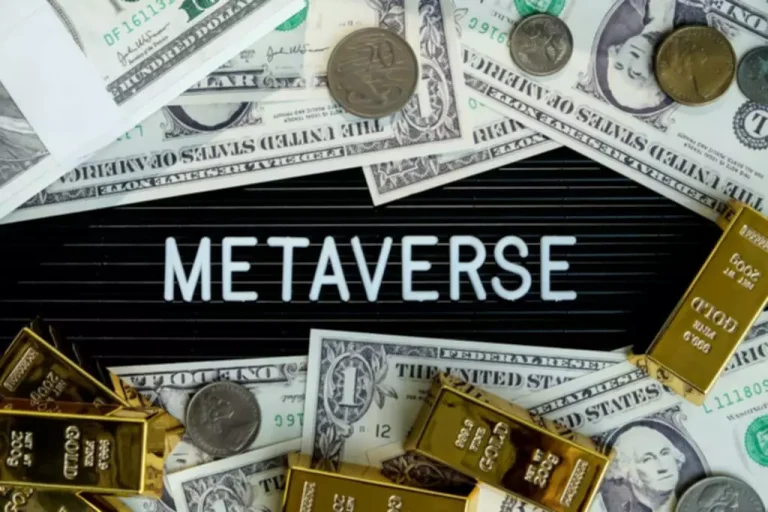Each DMA channel in our system can be programmed with a “weight” which is used when multiple agents try to make use of the bus at the same time. The weight ensures that the programmer/designer controls the bandwidth division among brokers – not the “piggishness” of the agents concerned. Standard Direct Memory Access (also called third-party DMA) adopts a DMA controller. The DMA controller can produce reminiscence addresses and launch memory learn or write cycles. It covers multiple hardware registers that can be read and written by the CPU. If the CPU is in command of all data transfers, it’ll not be in a position to carry out some other operations concurrently.

Subsequent operations on X will update the cached copy of X, but not the exterior reminiscence model of X, assuming a write-back cache. If the cache just isn’t flushed to the reminiscence before the next time a device tries to access X, the device will receive a stale value of X. By intelligently managing rivalry for memory entry, the DMA controller optimizes the system’s general efficiency by minimizing idle time and maximizing throughput. It coordinates communication between completely different elements seamlessly, permitting for smoother operation and improved effectivity in handling massive volumes of data.
This last step paves the way for ongoing processes within the pc system to proceed smoothly with none hindrance attributable to the exclusive use of sources during information transfers. Once the information switch is accomplished, the DMA controller triggers an interrupt to inform the CPU. This interrupt alerts that the DMA operation has completed successfully.
Nowadays, however, the memory typically has significantly higher bandwidth than the I/O bus, so even whereas a peripheral is reading or writing reminiscence, there’s usually a good quantity of bandwidth left over for the CPU to make use of. In addition, a modern CPU usually has a fair massive cache, so it could typically execute some instruction with out using primary memory in any respect. Data is repeatedly transferred between computers and gadgets in the fashionable digital world. However, pc systems are restricted to a selected knowledge rate at which they can process data. Therefore, knowledge processing has turn out to be a bottleneck with the proliferation of varied units, such as sensors, printers, and high-speed modems. Scatter-gather or vectored I/O DMA allows the switch of knowledge to and from a quantity of memory areas in a single DMA transaction.
However, in certain situations where exact management over information transfers is necessary, Programmed I/O can provide benefits when it comes to flexibility and customization for particular duties. Programmed I/O DMA is a method the place the CPU directly controls information transfers between peripheral gadgets and memory. In this type of DMA, the CPU initiates every data switch by issuing commands to maneuver data to or from reminiscence.
The Definition Of Direct Memory Entry
Without Direct Memory Access, when the CPU uses programmed inputs/outputs, it’s normally absolutely occupied throughout the entire learn or write operation, so it can’t carry out other duties. With DMA, the CPU first initiates the switch, then performs other operations whereas the switch is in progress, and finally receives an interrupt from the DMA controller (DMAC) when the operation is complete. As initially outlined, DMA controllers trusted the fact that the bus had separate traces to claim for memory read/write, and I/O read/write. The DMA controller took advantage of that by asserting each a memory learn and I/O write (or vice versa) at the similar time.

On the other hand, a computer system connected to a network pc (NC) can’t use a DMA controller to transfer knowledge. When linked to an NC, the computer system should depend on the CPU to help in information transfer. Additionally, whereas utilizing DMA for data transfer, we can encounter the cache coherence problem. Direct Memory Access (DMA) is important https://www.xcritical.com/ for IT infrastructure because it turbocharges information switch effectivity by liberating up the CPU from dealing with each byte trade. Think of it as a visitors controller rerouting data immediately between devices and reminiscence lanes, bypassing CPU site visitors jams.
Business Economics
This clears TXE, so there isn’t any extra DMA transfer, until given bye in UART is transmitted when TXE is ready again and the whole course of repeats till DMA’s depend runs to zero. The cycle stealing mode is utilized in a system the place the CPU can’t be disabled for the length of time required for the burst transfer mode. In the cycle stealing mode, the DMA controller obtains the entry to the system bus by utilizing the BR (Bus Request) and BG (Bus Grant) indicators, that are the same because the burst mode. These two alerts management the interface between the CPU and the DMA controller.

Without DMA, when the CPU is using programmed input/output, it’s typically fully occupied for the whole length of the learn or write operation, and is thus unavailable to perform other work. With DMA, the CPU first initiates the switch, then it does different operations whereas the transfer is in progress, and it finally receives an interrupt from the DMA controller (DMAC) when the operation is finished. This feature is helpful at any time that the CPU can not sustain with the rate of information switch, or when the CPU needs to perform work while waiting for a comparatively slow I/O information transfer. Many hardware methods use DMA, including disk drive controllers, graphics playing cards, network playing cards and sound playing cards. DMA can additionally be used for intra-chip data switch in some multi-core processors. Computers which have DMA channels can switch knowledge to and from devices with much much less CPU overhead than computers with out DMA channels.
Pros And Cons Of Direct Reminiscence Entry
By utilizing DMA, devices like community cards, graphics playing cards, gadget drivers, and storage controllers can immediately entry memory locations without fixed intervention from the processor. This streamlined course of accelerates knowledge movement and reduces latency in data change inside the system. You can adopt the RDMA know-how to enable computer systems in a community to trade information in the principle reminiscence with out involving the processor, cache or working system of both computer.

Other bus standards would possibly allow entry to the complete vary of reminiscence addresses. Peripheral part interconnect makes use of a bus grasp with the CPU delegating I/O management to the PCI controller. Without a process corresponding to DMA, the pc’s CPU turns into preoccupied with data requests from an connected gadget and is unable to carry out other operations throughout that time. With DMA, a CPU initiates a data transfer with an connected gadget and might still carry out other operations whereas the information switch is in progress. DMA enables a pc to switch information to and from devices with much less CPU overhead. The unit communicates with the CPU through the data bus and management traces.
Transparent Mode
The DMA controller also manages the memory addresses used for the data switch, as nicely as any essential information buffering. Then the Direct Memory Access controller provides addresses and read/write management lines to the system memory. Each time a byte of information is prepared to be transferred between the peripheral system and the memory, the DMA controller increments its inner tackle register until a complete data block is transferred. To carry out input, output, or memory-to-memory operations, the host processor initializes the DMA controller with the variety of words to switch and the reminiscence tackle to make use of. Multiple hardware methods undertake Direct Memory Access, corresponding to disk drive controllers, graphics playing cards, community playing cards, and sound cards. Compared to computer systems with out Direct Memory Access channels, computer systems with DMA channels can transfer knowledge between units with a lot much less CPU overhead.

Cycle stealing mode is useful for controllers that monitor knowledge in real time. They had been supported to the extent they’re required to support built-in legacy PC hardware on later machines. In cases the place an unique 8237s or direct compatibles had been still used, transfer to or from these devices should be limited to the primary 16 MB of primary RAM whatever the system’s precise tackle house or quantity of installed reminiscence.
In this course of, a DMA-capable device takes management of the system bus to manage knowledge transfers independently from the CPU. The DMA controller coordinates with other gadgets on the bus for efficient knowledge motion, ensuring easy communication circulate within the system. During initiation, the DMA controller identifies and prioritizes incoming requests based mostly on predefined standards. This ensures environment friendly utilization of system assets and minimizes delays in data switch. Once a request is accepted, the DMA controller temporarily takes control of the bus to facilitate direct communication between units and reminiscence. This technique may be less environment friendly than other DMA varieties because it depends heavily on CPU intervention, leading to elevated overhead and slower processing speeds.
Learn from this text how DMA works, the principles, the kinds of DMA, and a few of its benefits and limitations. Direct Memory Access can be used for “memory to memory” to copy or move data in memory. It can switch expensive memory operations (such as large copies or scatter-gather operations) from the CPU to a devoted DMA engine. DMA is important in network-on-chip and memory computing architectures. The separation of memory types is vital since system memory operates at the next pace than I/O reminiscence. The DMA controller directs data between gadgets and system reminiscence, making the operation between the 2 gadgets appear to be a single operation.
Step 5: Reminiscence Entry
Once the DMA controller is granted entry to the system bus by the CPU, it transfers all bytes of data within the information block before releasing control of the system buses again to the CPU, however renders the CPU inactive for comparatively lengthy periods of time. Once the DMA controller has management of the bus, it initiates the actual data motion between gadgets and reminiscence. The DMA controller coordinates with the source and destination units to effectively transfer knowledge with out involving the CPU. During data transfer, data flows instantly from one system to another through DMA channels with out CPU intervention. A DMA (Direct Memory Access) controller is a hardware component that enables data to be transferred between peripheral gadgets and reminiscence without involving the CPU. This frees up the CPU to carry out other duties whereas the DMA controller handles the data transfer.
If UART is ready to 8-bit information and you write 16 or 32 bit wide information to it, the uppermost bits simple get misplaced. When utilizing “programmed I/O,” the CPU reads knowledge from or writes data to a peripheral and, if the data direct market access brokers need to be stored in memory, the CPU does that as properly. So the CPU would possibly learn a byte from the disk controller, retailer that byte into a buffer in reminiscence, and repeat that to learn a complete sector from disk.